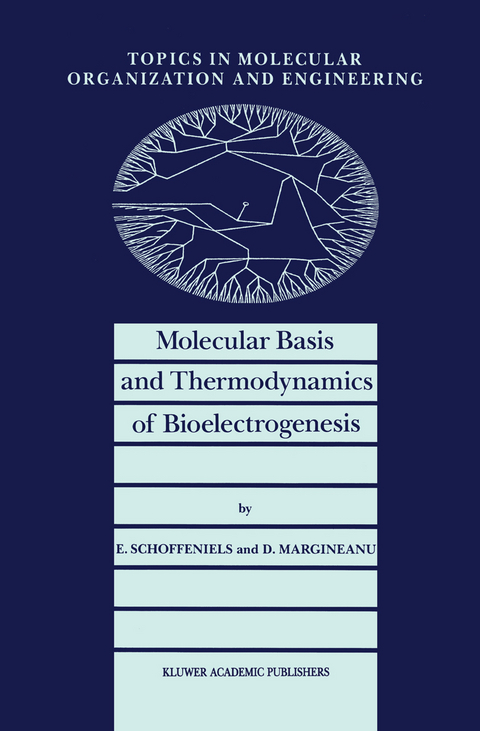
Molecular Basis and Thermodynamics of Bioelectrogenesis
Springer (Verlag)
978-0-7923-0975-8 (ISBN)
I The Description in Physico-Chemical Terms of Nervous System Properties.- I.1. Living systems as dissipative structures with local quasi equilibrium.- I.2. Information flows in living systems.- I.3. Evolution of the ideas about bioelectrogenesis. A brief account.- References.- II Cell Membranes and Bioelectrogenesis.- II.1. The ubiquitous cellular component.- II.2. Membrane molecular components and their dynamics.- II.3. Silent and excitable membranes.- References.- III Phenomenological Aspects of Bioelectricity.- III.1. Resting potential of the cells.- III.2. The passive propagation of potential changes. Axons as electric cables.- III.3. Regenerative propagation of action potentials in excitable membranes.- III.4. Intercellular transmission of excitation.- III.5. An overview of bioelectric phenomena.- References.- IV Molecular Approaches of Bioelectricity.- A. Intermediary metabolism in brain.- B. Control of glycolysis.- C. Non oxidative consumption of glucose during neural activity.- D. The pentose shunt.- E. The amino acids pool.- F. Concluding remarks.- References.- V Puzzle of Nerve Impulse Thermodynamics.- V.1. Oxygen consumption and heat production inactive nerve.- V.2. Energy dissipation by Na+/K+ pumps in nerves.- V.3. Energy changes during the action potential.- V.4. Thermodynamic inconsistency of the kinetics of n, m and h parameters.- References.- VI Thiamine Triphosphate as the Specific Operative Substance in Spike-Generation.- Conclusion.- References.- VII. Merging Electrophysiology and Molecular Approaches.- VII.1. Single-channel recording.- VII.2. The structure of channel proteins.- VII.3. From molecular mechanisms to complex brain functions.- VII.4. Levels of unitary events.- References.- Index of Names.- Index of Subjects.
| Erscheint lt. Verlag | 31.10.1990 |
|---|---|
| Reihe/Serie | Topics in Molecular Organization and Engineering ; 5 |
| Zusatzinfo | X, 182 p. |
| Verlagsort | Dordrecht |
| Sprache | englisch |
| Maße | 210 x 297 mm |
| Themenwelt | Naturwissenschaften ► Chemie ► Physikalische Chemie |
| ISBN-10 | 0-7923-0975-8 / 0792309758 |
| ISBN-13 | 978-0-7923-0975-8 / 9780792309758 |
| Zustand | Neuware |
| Haben Sie eine Frage zum Produkt? |
aus dem Bereich


